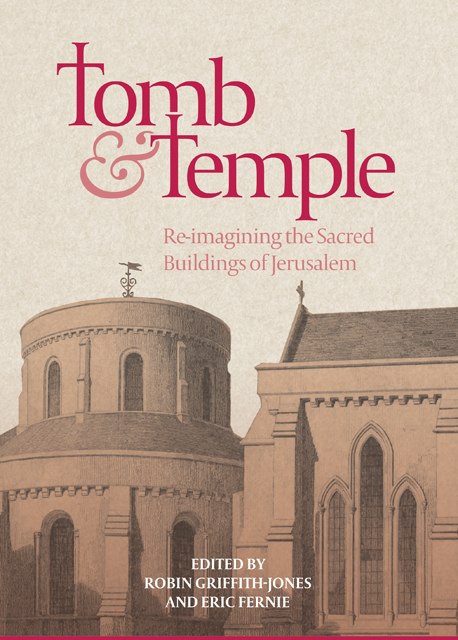Book contents
- Frontmatter
- Contents
- Illustrations
- Preface
- Contributors
- Abbreviations
- Editors’ Note
- Introduction
- Part I Re-presenting Jerusalem
- Part II The Church of the Holy Sepulchre
- Part III The Noble Sanctuary / The Temple Mount
- Part IV The Orthodox Churches
- Part V Round Churches in the West
- Appendix: The Knights’ Effigies: Newly Discovered Drawings by John Guillim, c. 1610
- Epilogue
- Index
- Already Published
18 - The English Round Church Movement Table and Notes: English Round Churches
Published online by Cambridge University Press: 17 January 2023
- Frontmatter
- Contents
- Illustrations
- Preface
- Contributors
- Abbreviations
- Editors’ Note
- Introduction
- Part I Re-presenting Jerusalem
- Part II The Church of the Holy Sepulchre
- Part III The Noble Sanctuary / The Temple Mount
- Part IV The Orthodox Churches
- Part V Round Churches in the West
- Appendix: The Knights’ Effigies: Newly Discovered Drawings by John Guillim, c. 1610
- Epilogue
- Index
- Already Published
Summary
Between the Western capture of Jerusalem in 1099 and its eventual return to local control in 1187, a little-understood architectural movement swept throughout southern England and the Midlands [Fig. 18.1]. For the first time, the English landscape featured local ‘copies’ of the Anastasis Rotunda of the Church of the Holy Sepulchre in Jerusalem, the site traditionally associated with Jesus’ resurrection and empty tomb. At least fifteen Holy Sepulchre copies were built in England between the First Crusade and the fall of Jerusalem; a sixteenth was built when Latin Christians briefly regained Jerusalem by treaty (1229–44) [Table 18.1, p. 371 below]. Therefore, there is a direct correlation between the Western Christian capture of Jerusalem and the appearance of the first English round church, just as there is a direct correlation between the Latin loss of the city and the end of the English round church movement. The full significance of this phenomenon has been overlooked due to the poor survival rate of English round churches: nearly three-quarters of these structures have been destroyed. Yet, by analysing the full round church corpus in its architectural, political, religious and geographical contexts, we can finally begin to understand the importance of the round church movement to twelfth-century English society. These distinctive churches, unknown in England before the crusades, allowed the English to claim the Church of the Holy Sepulchre as part of their own spiritual heritage.
Above all, architectural copies of the Anastasis Rotunda signified the resurrection of Jesus, the core tenet of the Christian faith. Yet the round church took on additional meaning in the crusade era: Western Christian control of the Church of the Holy Sepulchre was a stated objective of the First Crusade. The sudden appearance of round churches in England after the crusader capture of Jerusalem simultaneously introduced religious and political signifiers within the rotunda building form. Personal devotion to the site of the resurrection could thus work in tandem with the potential political agendas of English Holy Sepulchre patrons, and these emphases could shift depending upon the attitudes of the specific congregants, pilgrims and passers-by who interacted with the building.
- Type
- Chapter
- Information
- Tomb and TempleRe-imagining the Sacred Buildings of Jerusalem, pp. 352 - 375Publisher: Boydell & BrewerPrint publication year: 2018
- 2
- Cited by

